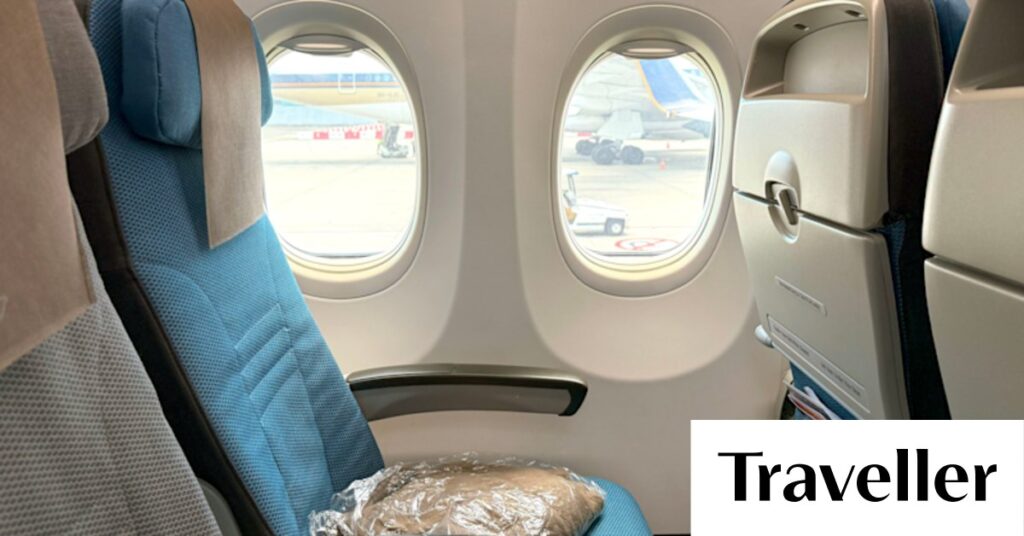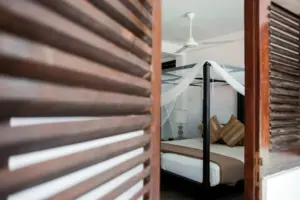
Singapore Airlines’ Boeing 737-800 NG is a curious outlier in the airline’s fleet, offering the smallest legroom but maintaining the high service standards the carrier is known for. The aircraft, inherited from the former Silk Air, features a 3-3 seating configuration with economy seat widths at a standard 17.7 inches (45cm), but a notably tight pitch of just 30 inches (76cm).
The plane’s economy class seats are arranged in a 3-3 configuration, and passengers hoping for a little extra space might find luck with an aisle seat near the back, as one traveler did. This model is also the only one in the fleet where business class seats do not lie flat, further setting it apart from the rest of Singapore Airlines’ offerings.
Entertainment and Technology: A Step Back in Time
Unlike the rest of the fleet, the Boeing 737-800 NG lacks seat-back entertainment screens. Instead, passengers must rely on their own devices to access a limited subset of the KrisWorld Entertainment system. For those who forget their headphones, the airline provides them to plug into the armrest for listening to one of the 12 available audio channels, reminiscent of older in-flight experiences.
Power outlets are shared between passengers, with a universal outlet and USB-A port available on a two-between-three basis. Unfortunately, Wi-Fi is not available on this aircraft, a significant deviation from the more modern planes in the airline’s lineup.
Service and Dining: Consistent Excellence
Despite the aircraft’s limitations, the service provided by Singapore Airlines’ crew remains exemplary. Attentive and efficient, the crew ensures a pleasant journey. When overhead locker space was reserved for crew use, a friendly crew member quickly found an alternative spot for a passenger’s bag.
The in-flight meal options, although limited, are well-prepared. While the spiced chicken in creamy tomato gravy ran out before reaching some passengers, the fish arrabbiata pasta and barley, cucumber, and smoked salmon salad were well-received. Complimentary wines, beers, and spirits add to the dining experience, followed by individual tubs of ice cream.
Sustainability and Fleet Modernization
Singapore Airlines is committed to achieving net zero carbon emissions by 2050. The older Boeing 737-800 NG does not align with this goal, as it is less fuel-efficient than newer aircraft. This is one reason the airline plans to phase out this model by October, replacing it with the more modern Boeing 737-Max 8.
The transition to newer aircraft will bring improvements such as entertainment screens and Wi-Fi in all seats, and business class seats that lie flat, standardizing the experience across the fleet. The seat pitch in economy will remain the same, but the overall passenger experience is expected to improve significantly.
Future Prospects and Conclusion
Currently, Singapore Airlines operates the Boeing 737-800 NG on routes from Singapore to Penang, Kuala Lumpur, and Kathmandu. By October, these routes will be serviced by the upgraded fleet, enhancing the travel experience with modern amenities and sustainable operations.
For travelers, the cost of a return economy class ticket from Sydney or Melbourne starts at approximately $1600. While the service and food on the Boeing 737-800 NG remain commendable, the overall experience does not fully reflect the premium standards typically associated with Singapore Airlines.
As the airline moves towards a more modern fleet, passengers can look forward to an enhanced in-flight experience that aligns with Singapore Airlines’ reputation for excellence. Until then, the Boeing 737-800 NG serves as a reminder of the rapid advancements in aircraft technology and passenger expectations.







